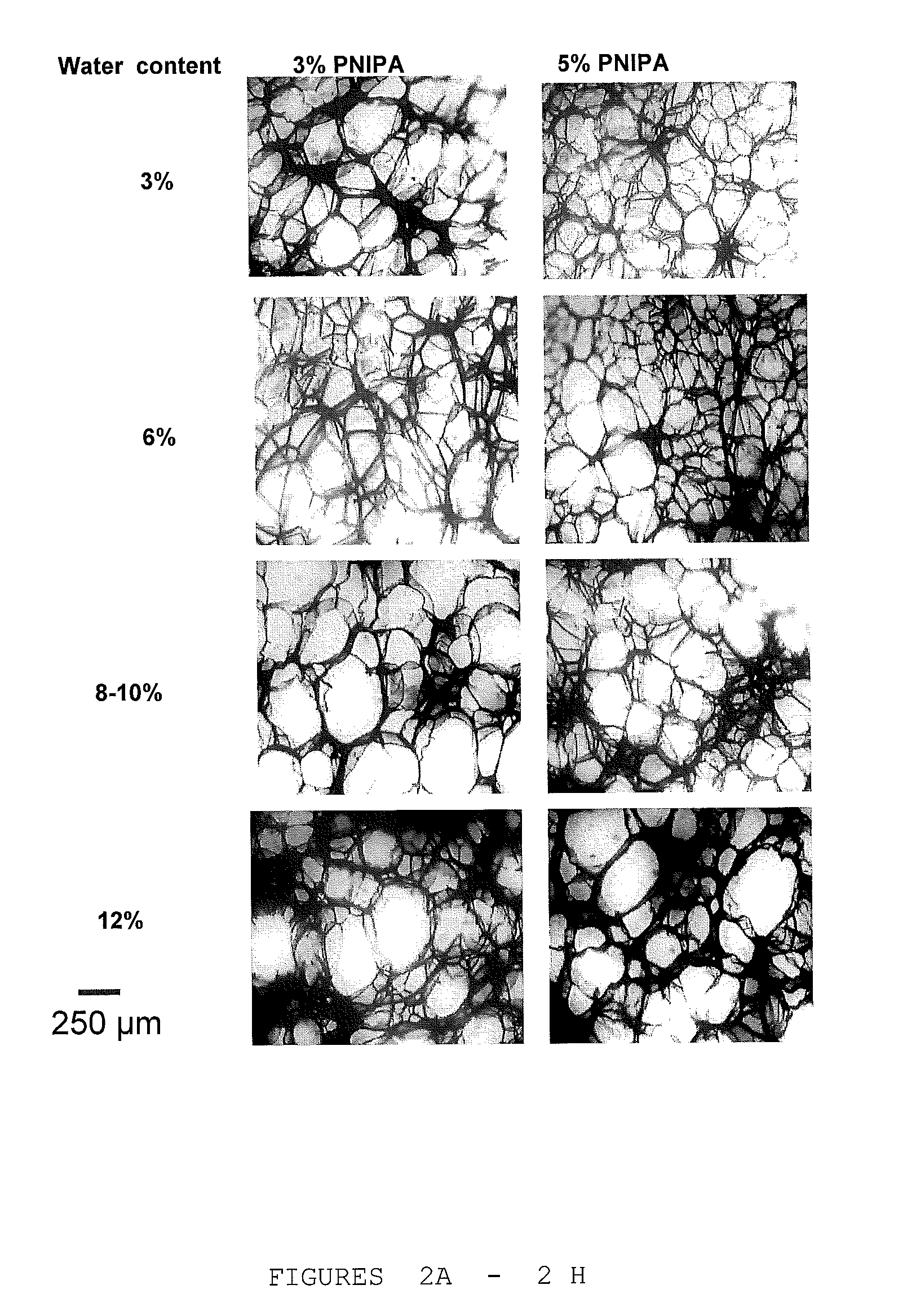Polymer particles and related articles
a technology of polymer particles and related articles, applied in the field of polymer particles, can solve the problems of water expandable styrene polymers, process is carried out, and emission is regarded as undesirabl
- Summary
- Abstract
- Description
- Claims
- Application Information
AI Technical Summary
Benefits of technology
Problems solved by technology
Method used
Image
Examples
example 1
[0068]Polystyrene was prepared via bulk polymerization process. In three polystyrene samples, poly (N-isopropyl acrylamide) microgel (PNIPA) was incorporated as the water-retaining agent in weight percentages of 1%, 3% and 5%, and one polystyrene sample was prepared without a water-retaining agent (i.e. pure PS).
[0069]The graph of FIG. 1 illustrates the water absorption effects of the varying weight percentages of PNIPA microgel used as the water-retaining agent. The polymer was prepared in a bulk polymerization. Since these samples are large size samples, they have to be grinded in order to obtain particles of the desirable size. This was done by cooling the samples in liquid nitrogen, followed by grinding of these cold samples. This process results in a large size distribution and shape irregularities.
[0070]The particles were immersed in boiling water, i.e. between 100° C. to 120° C. and refluxed for some time. That is, the particles were immersed in boiling water for a few minute...
example 2
[0075]Polystyrene particles were prepared via a mini-extruder. Polystyrene was mixed in the mini-extruder for five minutes at 160° C., which also was the temperature of the extruded material. A string of 1.5 to 2 mm in diameter was obtained. This string was cut into pieces of about 3 mm in length and the resulting granules were treated with boiling water at varying times. The weight percent of the water-retaining agent was 3.0% based on the weight of each sample, which was 5 grams. The types of PNIPA that were used included PNIPA microgel, PNIPA grafted on Aerosil 200, and linear PNIPA. Additional water retaining agents included high amylase starch (HAS) obtained from Cerestar, Belgium; Zeolit X (crystalline aluminosilicate, NA+ counterion, Si / Al<2.5, large pore size, channels with a diameter of 0.74 nm, particle size ranges from 20 to 40 μm.) provided by Cerestar, Belgium; and ordinary corn starch (Cerestar, Belgium). The samples also included pure polystyrene, i.e. not water retai...
example 3
[0077]This example pertains to the use of polystyrene with high amylase starch (HAS) as a water-retaining agent in weight percentages of 1%, 3%, and 5% for samples that weigh 5 grams. Samples were prepared and tested for water absorption content similar to that of Example 2. The results are shown in FIG. 4, which graph illustrates that an increase in the weight percent of HAS, i.e. 5% by weight, results in an increase in the absorption of the water.
PUM
| Property | Measurement | Unit |
|---|---|---|
| Temperature | aaaaa | aaaaa |
| Fraction | aaaaa | aaaaa |
| Fraction | aaaaa | aaaaa |
Abstract
Description
Claims
Application Information
 Login to View More
Login to View More - R&D
- Intellectual Property
- Life Sciences
- Materials
- Tech Scout
- Unparalleled Data Quality
- Higher Quality Content
- 60% Fewer Hallucinations
Browse by: Latest US Patents, China's latest patents, Technical Efficacy Thesaurus, Application Domain, Technology Topic, Popular Technical Reports.
© 2025 PatSnap. All rights reserved.Legal|Privacy policy|Modern Slavery Act Transparency Statement|Sitemap|About US| Contact US: help@patsnap.com



